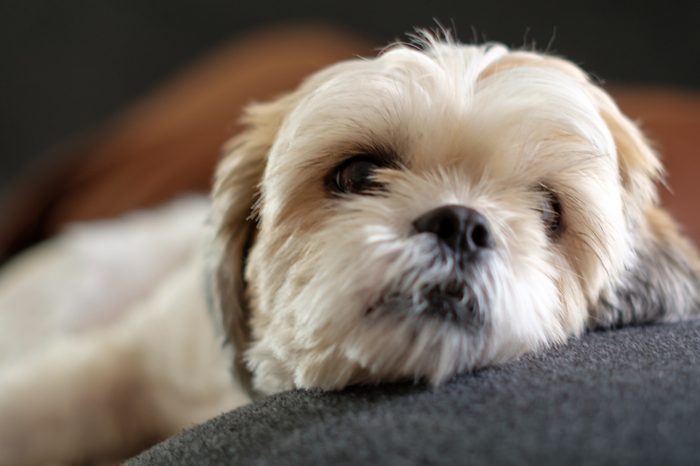
You’re barking up the wrong tree
Family tree that is. Hundreds of years of breed-specific genetics run through your dog’s veins, and it’s best to cater to their genetics for optimal mental and physical health. For example, dogs that were bred to herd, pull carts, or hunt will need more exercise because historically, their days were filled with activity and their bodies were made to move more often. On the other hand, some toy breeds, such as the Shih Tzu and Pekinese, prefer snuggle time over leash time—these breeds were bred to be lap dogs for royalty. Make sure you see what the laziest dog breeds are to see if yours is an expert napper.
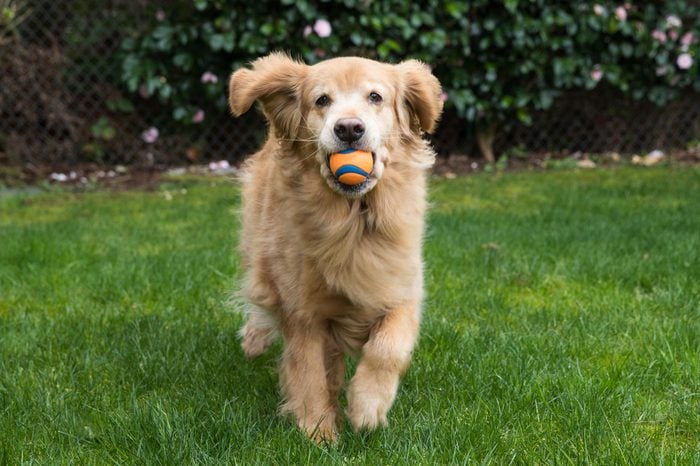
I gotta move!
Sorry, a quick game of fetch while you sit on the sofa or letting your dog out in the backyard to do her business doesn’t hit the mark. And if your furbaby isn’t getting enough exercise, you’ll notice it in weight gain. Just like with humans, extra weight strains your pooch’s heart and joints. Sore joints lead to decreased mobility so that it can be a vicious cycle. Also, a lack of exercise can cause a ho-hum attitude towards toys and training, and serious health conditions like and diabetes. Does your pooch need to lose a few pounds? Start with these proven weight loss tips for your chunky furbaby.
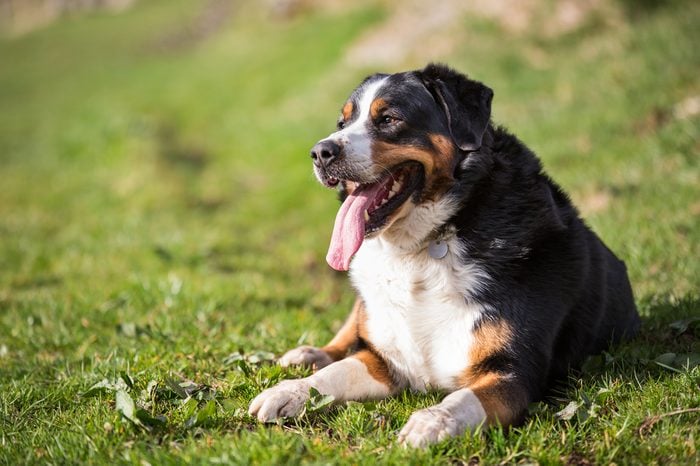
But keep an eye on my stats
Some dogs easily tire while others have a “can’t-stop-won’t-stop” attitude so you’ll have to watch for signs of overexertion. “You need to monitor and listen to your pet during walks and runs to make sure they’re not having trouble,” says Jennifer Freeman, DVM, PetSmart resident veterinarian, and pet care expert. If you notice your furbaby seems totally exhausted, is panting heavily, has an altered gait, or his tongue is limp and dangling, it’s time to dial it back. And if he seems really out of it after a walk or playtime, pull back on the amount of exercise for next time. Find out the signs your “healthy” pup is sick.
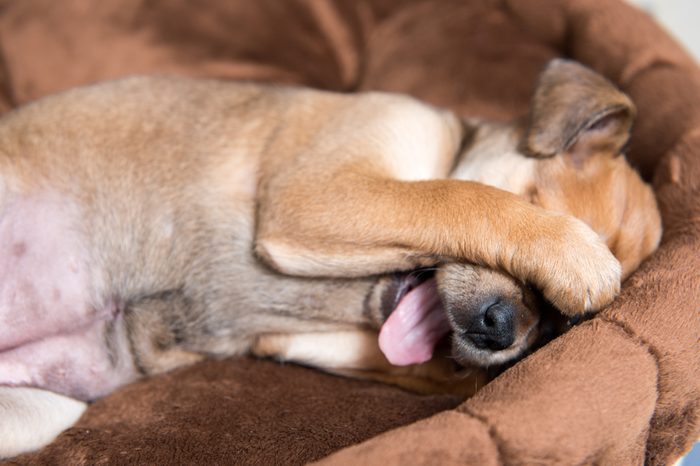
I need to exercise my brain too
Dr. Freeman says it’s important to provide mental exercise for your pup in addition to the physical. “Dogs need mental exercise just as much as physical to keep them mentally sharp.” Toys and games are a fun way to get it done. “For example, playing hide-and-seek with treats helps your pooch exercise cognitive abilities such as memory. You can also divide up your dog’s meal and hide it in different places to encourage your dog to look for it instead of just placing it in a dinner bowl,” suggest Dr. Freeman. These are the 19 things your dog actually wants from you.
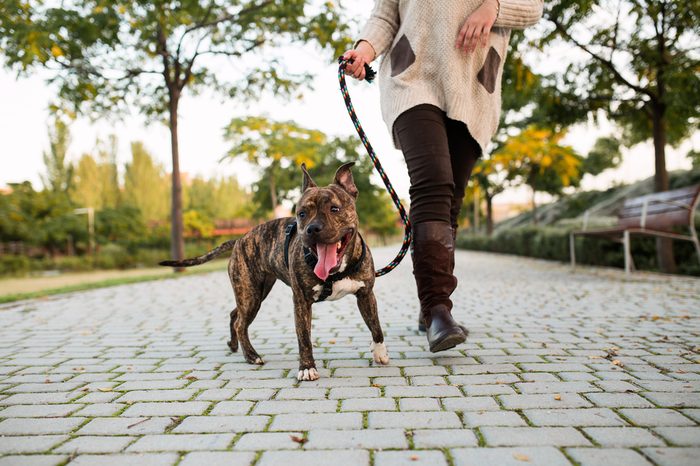
Could we stop and smell the roses today?
No doubt, walking is a tried and true way to exercise your dog (and great for you too), but the same ole walk is nothing to howl over. Walking can serve a dual-purpose when mental stimulation is offered. “Allow your dog to sniff the ground, the bushes, trees, etc. and use the walk for training opportunities like checking in, recall, and sitting at the crosswalks, ” says Erin Askeland, a certified canine behavior consultant and at Camp Bow Wow. Remember, dogs sleep between 12 to 14 hours a day and most spend their day relaxing, especially if they are left at home alone during the day or crated. Here are some smart ways to keep your pooch occupied while you’re at the office.
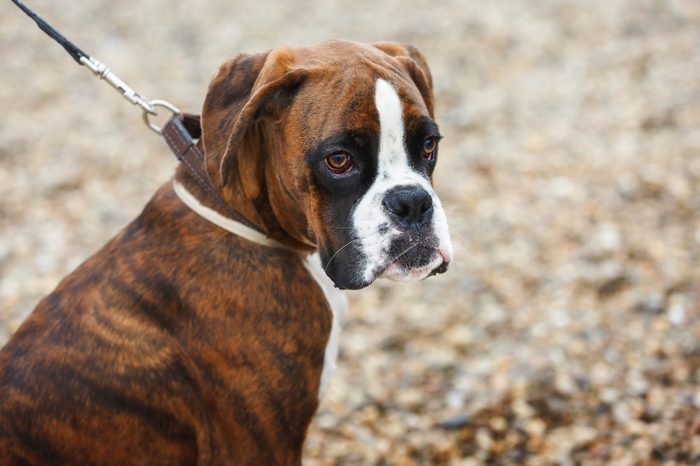
Hard pass on the run, mom
Dog’s with short noses or brachycephalic breeds, such as English and French bulldogs, bull mastiff, Boston terrier, boxers, pugs, and Shih Tzus may have trouble breathing if they work too hard. “It’s not recommended that these dogs be taken out on runs, but rather they should go on regular, leisurely walks,” says Dr. Freeman. “This ensures that they’re getting the exercise they need to stay at a healthy weight without impacting their ability to breathe.” Weight can creep up quickly on these breeds if they don’t get exercise, which will aggravate their breathing and significantly impact their ability to exercise. Brachy dogs and intense heat are a dangerous combo. Make sure you know the warning signs of heat stroke in dogs.
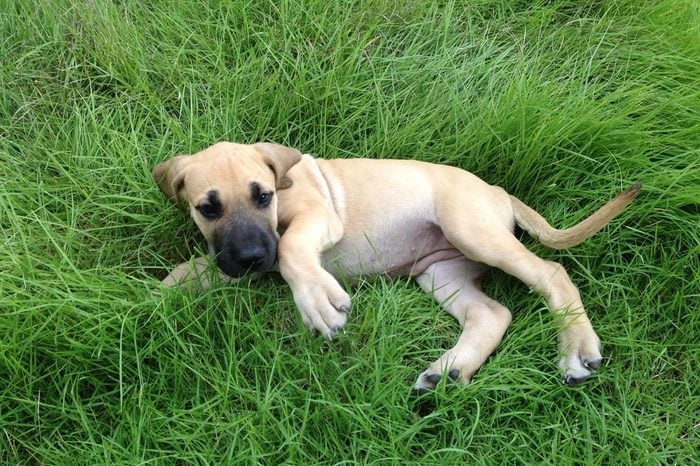
I’m too young for this!
Puppies seem to have limitless energy and play longer and faster than older dogs, but that doesn’t mean they’re ready for all types of exercise. “Do not take your dog on a run until they are at least one year of age, and for giant breeds (like a great Dane), even a little older,” warns Whitney Miller, DVM, director of veterinarian medicine at PetCo. “Before then, a puppy’s bones and joints are not fully developed, and they don’t have the stamina to keep up with you.” Be sure to avoid these 53 mistakes every pet parent makes.
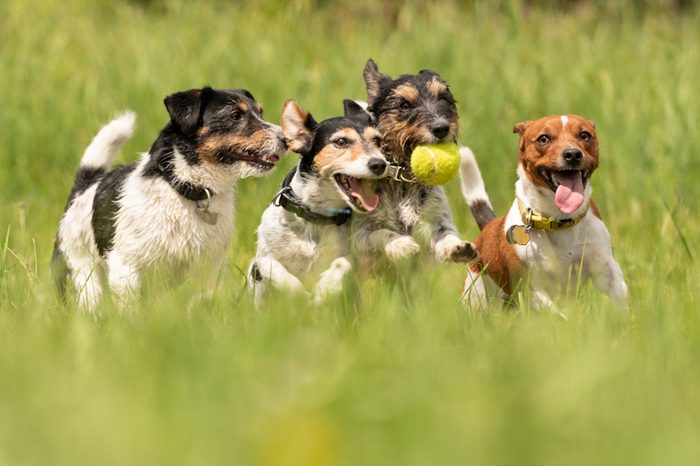
Sometimes, I want to hang with my squad
We know your dog is your best bud and you love to include him in all you do, but sometimes that’s not the safest idea. “Avoid roller skating, biking, or skateboarding with your pet unless safety precautions are in place and your dog can handle intense exercise,” says Dr. Miller. “Most dogs cannot keep up with these activities, and there is a strong likelihood of injury for you and your dog.” So, when you’re doing some human stuff, consider taking your furbaby to doggie daycare. “Dogs are social creatures, and so many enjoy the dynamics of group play with other dogs,” Askeland says. Take a look at 50 things that really make your dog (and other furbabies) tick.
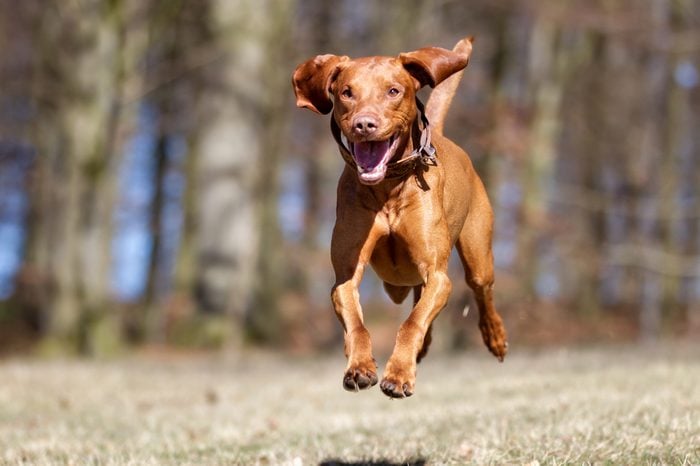
I have breed-specific needs
The type of exercise your dog will enjoy is often driven by genetics, and even mixed breeds have a dominating characteristic of a specific breed. High energy breeds like Weimaraners, Vizslas, and certain terriers can be great running partners, Dr. Miller says. “Just make sure they are secured on a leash, get plenty of water, are on a high-quality diet, and build up a tolerance for long jaunts.” If you have a dog from the herding group like a border collie, they may enjoy an activity that resembles real-life herding like agility training. Got a nosy hound like a beagle? Askeland says he may prefer nose work or walks that enable him to investigate every little twig and leaf. And if you have a spunky Jack Russel terrier, Askeland says they may go ga-ga for lure-chasing. Read up on the longest-living dog breeds for long-lasting love.
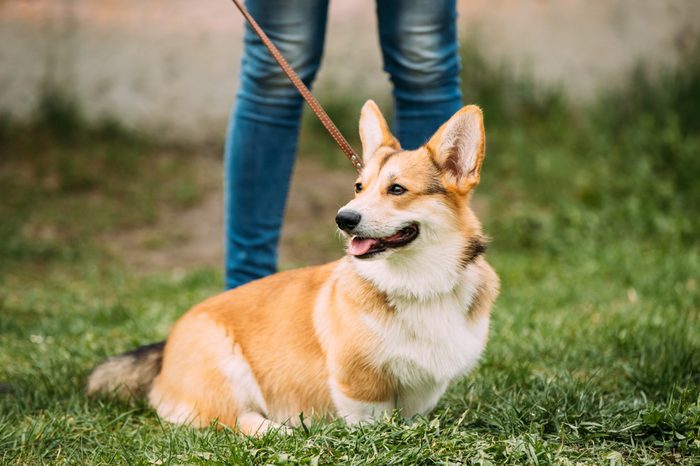
You’ll be in the doghouse if you let me do this
Speaking of breed-specific no-no’s Dr. Miller says if you have a shorter breed like a Dachshund or Corgi, which are prone to back injuries, avoid high impact activities like jumping and heavy running. Stick to walking, fetch, and chase and offer toys with treats hidden inside. Next, learn how to teach your dog to fetch properly.
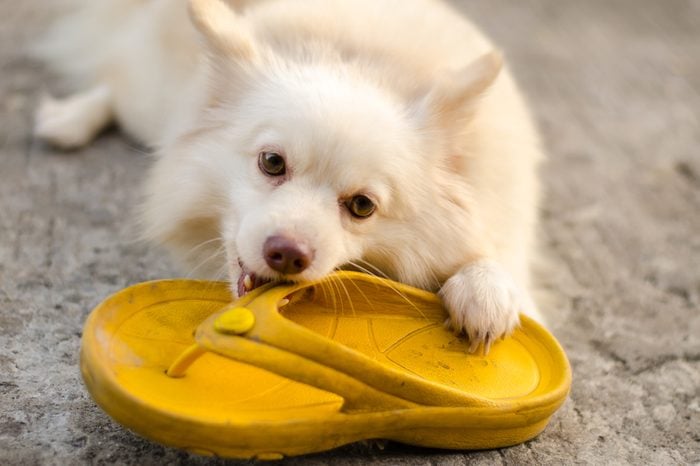
This is why I chewed up your shoes
“When a dog’s physical needs aren’t met, you may see behavior issues like destructive tendencies or a decrease in response to training cues or commands,” says Askeland. In fact, the majority of behavior issues stem from lack of exercise, Askeland says. Dr. Miller adds if a dog is chewing shoes, digging, or barking excessively, it could be “boredom behavior” and a clear sign your pooch doesn’t have a good outlet for their energy and could benefit from more exercise. Finally— the reasons behind your dog’s weird behavior are explained.
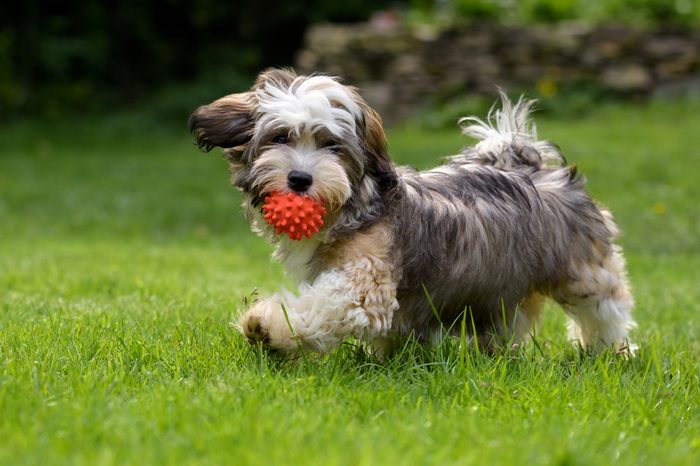
This is how much I should exercise
Similar to humans, a dog’s exercise needs will vary depending on age, size, and overall health. “Typically your dog should spend anywhere between 30 minutes to two hours on any type of physical activity whether it be walking, chasing a toy, or sprinting in the backyard or dog park,” says Dr. Freeman. Interestingly enough—and conveniently too, is that it doesn’t have to be all at once. Dr. Freeman says it can be split up throughout the day to avoid tiring out the dog—and pet parents. Headed to the dog park? Read these rules of dog park etiquette first.
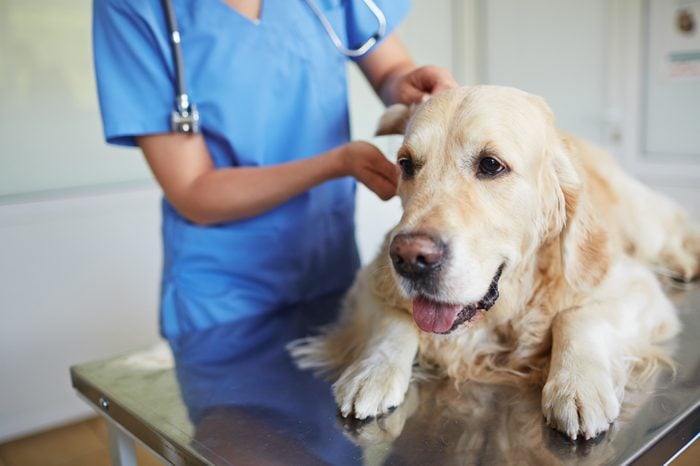
But double check with my vet first
Before you try any new activities make sure you get the green light from your vet first. “Your veterinarian can recommend an exercise program based on your dog’s specific needs, taking any health conditions into consideration. It is also important to build up your dog’s tolerance for activity, start with a light exercise routine and build up to an appropriate fitness regimen,” says Dr. Miller. And if your dog is older, exercise is still essential for overall health but it will be scaled back, especially if arthritis has set in. Next, read on for more facts you never knew about your pup.